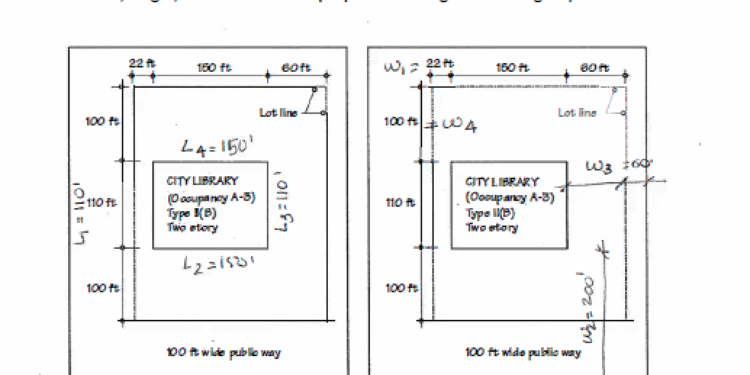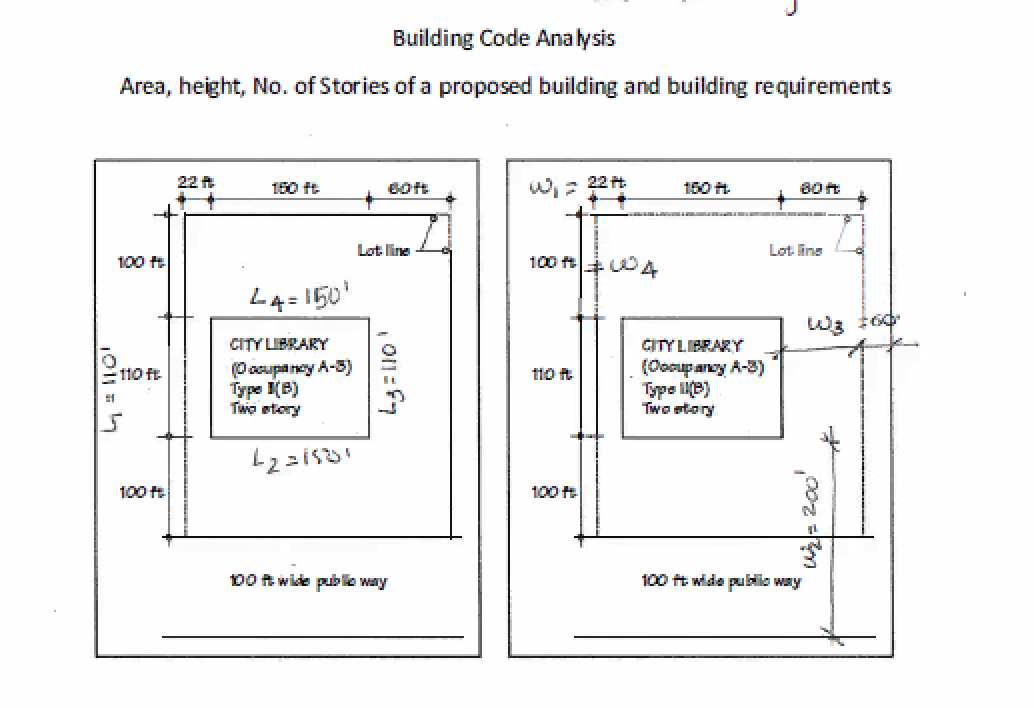Building Code Analysis

Building code analysis serves as the foundation of successful construction projects. FEMA’s largest longitudinal study shows that proper building code implementation could reduce property losses by $132 billion. These regulations are over 200 years old and now act as the key mechanism that defines standards to ensure building occupants’ life, safety, and welfare.
Building codes protect people and property at their core. The challenge of navigating these regulations grows as building departments struggle with staffing shortages from shrinking municipal budgets. Projects that skip proper building code analysis often face delays that get pricey when building departments need corrections during review.
Construction professionals need to know how to perform a full building code analysis with the right templates and checklists. This piece dives into the core parts of building code compliance and offers examples and resources that make this daunting process simpler. The complete breakdown will help you streamline your building code analysis approach in 2025, covering everything from occupancy classifications to regional code differences.

Table of Contents
What is a Building Code and Why It Matters
Building codes worldwide set minimum requirements for designing, building and maintaining structures. These codes serve as rules that specify construction standards for buildings and other structures. Once the appropriate governmental or private authority formally enacts them, they become law in that jurisdiction.
Definition and purpose of building codes
We created building codes to protect communities and individuals. They tackle crucial societal concerns like public health, safety and environmental protection. Regional or local authorities write these codes using standards as guidelines. Research on how structures respond to various hazards helps develop these standards.
These regulations cover several building aspects, including:
- Structural integrity and placement
- Mechanical systems (sanitation, water supply, ventilation)
- Fire prevention and control
- Energy conservation requirements
- Means of egress (exit strategies)
- Accessibility standards
The United States has two main model building codes. The International Code Council (ICC) and National Fire Protection Association (NFPA) create these widely adopted codes. All fifty states and the District of Columbia use one of these versions at either state or jurisdictional level.
How codes protect health, safety, and welfare
Building codes protect public welfare in many ways. They ensure buildings can withstand various stresses and environmental conditions. The codes also set fire safety standards that prevent fires, limit their spread, and aid safe evacuation.
These regulations help people with disabilities access buildings and set energy efficiency requirements. The National Institute of Building Science found that modern building codes save $11 for every $1 invested in natural hazard mitigation. FEMA studies show that using the latest International Codes could help communities avoid more than $600 billion in disaster losses by 2060.
Money aside, building codes protect people’s health. They ensure proper ventilation, clean water supply, and sanitary waste systems. So they create safer living and working environments and set minimum quality standards for construction materials and methods.
Why building codes evolve over time
Building codes react to disasters or identified safety issues. “Building codes are written in blood” – this industry saying refers to tragic events that often drive code development.
Major historical events shaped today’s building regulations. Sir Matthew Hale created regulations requiring fire-resistant structures after the Great Fire of London in 1666. The Great Baltimore Fire of 1904 led Baltimore to match other cities’ stricter codes. More recently, Hurricane Andrew’s devastation in 1992 led to significant building code changes in Florida to enhance wind resistance and storm resilience, especially within the High-Velocity Hurricane Zone (HVHZ).
Updates happen every three years to fix gaps, add new safety research, and include technological advances. This revision process fixes previous issues and ensures buildings meet current safety and performance standards.
Local areas often change model codes based on their needs. California’s codes focus on earthquakes, while Florida’s codes address hurricanes. This flexibility keeps building standards relevant to specific geographic and climate challenges.
Understanding Jurisdictions and Code Authority
Building codes need enforcement authorities to work properly. Understanding this relationship plays a vital role in analyzing building codes effectively. Location determines how these regulations get interpreted and applied. This creates a complex regulatory world that professionals must traverse with great care.
What is the Authority Having Jurisdiction (AHJ)?
The Authority Having Jurisdiction (AHJ) represents the organization, office, or individual that enforces code requirements and standards. They also approve equipment, materials, installations, and procedures. Note that an AHJ doesn’t have to be a government employee. This vital entity checks if building code requirements have been properly applied throughout construction.
The AHJ’s form depends on project location and type:
- Local Government Agencies: City, county, or municipal building departments typically enforce building regulations
- Fire Departments: These units enforce fire codes and safety regulations
- State Government Agencies: Some regions rely on state-level authorities
- Federal Government Agencies: OSHA and other federal entities sometimes act as the AHJ
The AHJ reviews construction plans, issues permits, conducts inspections, and ensures buildings meet code standards. Ann Arbor, Michigan’s building code enforcement illustrates this structure. The City’s Building, Rental, and Inspection Services, County Building Inspection Department, and Township Building Department share these responsibilities.
How local amendments affect code interpretation
States adopt building codes differently, which leads to major variations in regulation application. Some states use model codes like the International Building Code completely. Others add amendments to statewide building codes. Local governments in certain locations can modify their own codes.
Local amendments let jurisdictions handle region-specific challenges. Notwithstanding that, they make building code analysis more complex by creating varied requirements. To name just one example, coastal areas usually have tougher regulations for flood zones and storm surges. Dense urban centers often use complex zoning overlays and historical preservation districts.
Building code analysis professionals must consider these local modifications. Their checklists need to verify local amendments that could affect project compliance.
Examples of regional code differences
Regional building code differences greatly influence how analysis happens. California emphasizes earthquake resistance in its codes, while Florida focuses more on hurricane protection.
States also vary in their adoption approaches:
- Full Adoption: Idaho, Montana, and Virginia use complete state-level adoption
- Partial Adoption: Alabama lets local jurisdictions adopt commercial building codes but controls residential and energy codes
- Local Control: Missouri only allows local municipalities to adopt building codes
Amendment allowances also differ between states. New York, North Carolina, and Washington permit both state and local amendments. Massachusetts only allows energy stretch code amendments locally.
Texas’s building code analysis requires attention to city-specific approaches. Some cities use simplified processes for quick permit approvals. California might need extra environmental reviews or specific energy-efficiency measures. These regional differences shape how building code analysis templates adapt to different jurisdictions.
Step-by-Step Building Code Analysis Process
A building code analysis works best with a step-by-step approach. Design professionals can optimize safety and design flexibility by following specific requirements. Let’s get into six key steps that create an effective building code analysis.
1. Occupancy classification
The life-blood of any building code analysis starts with knowing how people will use the building. The International Building Code (IBC) groups buildings into ten major occupancy categories (A through U, with some letters skipped) based on their main function. This grouping shapes every other code requirement.
You need to figure out if your building fits into these groups:
- Assembly (Group A): Theaters, restaurants, worship spaces
- Business (Group B): Offices, professional services
- Educational (Group E): Schools through 12th grade
- Institutional (Group I): Hospitals, nursing homes
- Residential (Group R): Apartments, hotels, homes
Safety requirements depend on occupancy classification because different uses create varying risks. These risks come from things like how many people are inside, how well they know the exits, and whether they might be sleeping.
2. Sprinkler system requirements
The next step after picking occupancy is deciding if you need automatic fire sprinklers. This choice affects many parts of building design. You must install sprinkler systems in:
- Educational (Group E) buildings with fire areas over 12,000 square feet
- Buildings higher than 55 feet
- Special places like covered malls, high-rise buildings, and airport control towers
Adding sprinklers brings big advantages to your building code analysis. You can have larger floor areas, lower fire-rating requirements, and longer travel distances for exits.
3. Construction type and materials
The IBC lists five main construction types based on how materials burn and resist fire:
- Types I and II: Noncombustible materials (concrete, steel)
- Type III: Noncombustible exterior walls, combustible interior elements
- Type IV: Noncombustible exterior walls, heavy timber interior
- Type V: Combustible materials permitted throughout
We picked construction types based on the building’s use, size, and budget. Each type needs specific fire-resistance ratings for walls, floors, and roofs.
4. Allowable floor area and height
Your building’s maximum dimensions come next, after setting occupancy and construction type. IBC’s Table 503 shows baseline values that change with:
- Sprinkler systems (usually adding 20 feet more height)
- Extra space from open areas around the building
- Special rules for unlimited area buildings
You calculate using this formula: Aa = At + (At × If) + (At × Is). Here, Aa means allowable area, At is tabular area, If shows frontage increase, and Is represents sprinkler increase.
5. Location on property
Your building’s location matters for fire separation and protection. Buildings need minimum distances from property lines or fire-resistant exterior walls.
A building code analysis checklist must check fire department access too. Fire trucks need roads within 150 feet of all first-story exterior walls. These roads should be 20 feet wide with 13′-6″ clearance above.
6. Means of egress and exit strategy
Safe exit paths round out the analysis. This means:
- Calculating how many people fit in each space
- Adding enough exits (usually two when more than 50 people)
- Spacing exits apart (at least half the building’s diagonal)
- Keeping travel distances within limits
- Looking for dead-end corridors and shared paths
A complete building code analysis template should show all these exit details. They keep people safe during emergencies.
Common Mistakes and How to Avoid Them
Building code experts can make mistakes too. You can save time, money and avoid legal troubles by steering clear of these common pitfalls during your construction project.
Assuming code compliance from past projects
Relying on knowledge from previous projects creates a dangerous situation in building code analysis. Memorizing code provisions leads to the biggest mistakes. Building codes evolve continuously to match progress and technological advancement in the construction industry. Engineers often think meeting 1980s or 1990s standards provides acceptable safety. This wrong belief stems from code changes that happen every three years.
You should verify current requirements for each new project with a complete building code analysis checklist instead of trusting memory or past experiences.
Overlooking accessibility requirements
President Eisenhower’s Committee for the Physically Handicapped in 1958 made accessibility a key design factor. ADA Standards for Accessible Design now cover new buildings, changes to existing facilities, and removal of architectural barriers.
Your design elements must follow accessibility guidelines with few exceptions. Common use spaces like examination rooms and cafeterias need to stay available, even if not all patient rooms require accessibility features.
Misinterpreting occupancy or use types
The most crucial step in applying building codes starts with identifying the right occupancy classification. This choice shapes requirements for many fire and life safety features. Wrong classification can lead to either too many or too few code requirements.
Multiple codes create major challenges. The NFPA and IBC classifications sometimes differ, especially with educational facilities, day care centers, and institutional settings.
Ignoring updates to local codes
Projects risk non-compliance and legal penalties when teams don’t keep up with changing building codes. Codes keep improving to match technological advances, climate changes, and society’s evolving needs.
Building codes differ by a lot between jurisdictions. What works in one place might break rules somewhere else. Working with experts and your local building department helps you avoid surprises later.
Tools, Templates, and Resources for 2025
Construction professionals need specialized resources to make building code compliance easier. The growing complexity of regulations makes it vital to have the right tools to complete projects quickly.
Using a building code analysis checklist
Detailed checklists help navigate through code compliance processes. A good building code analysis checklist should include structural safety, fire protection, accessibility requirements, and building systems standards. The Building Code Checklist for Universal Accessibility offers a systematic way to review provisions that create inclusive environments for people of different abilities and ages. These checklists help you think about critical elements like emergency protocols, structural integrity, and accommodation requirements you might miss.
Sample building code analysis template
A well-laid-out template helps document code compliance step by step. Good templates have sections for project information, code editions, occupancy classifications, construction types, sprinkler requirements, and allowable area calculations. Templates should start with simple project parameters such as scope of work and building code editions. They should then cover occupancy separations, construction types, and fire-resistance ratings. Well-designed templates also need fields for plumbing fixtures, structural design information, and egress requirements.
How UpCodes AI and other tools can help
AI-powered tools have made code analysis much faster. UpCodes created Copilot, an AI-powered building code research assistant that draws from a database with over 5 million code sections, 1,700 state and city codes, and 160,000 local amendments. This tool summarizes code sections, finds related provisions, performs calculations, and creates checklists based on project parameters. UpCodes updates its database about 7,000 times each month to keep it current.
Where to find a building code analysis example PDF
Building departments often share example PDFs that show detailed code analysis illustrations. You can download building code summary worksheets from online resources like Portland, Oregon’s municipality website. Building authority websites have example PDFs that show proper documentation for different project types. University facilities departments also publish building code analysis examples that serve as great reference points for complex projects.
Summing all up
Building code analysis is the life-blood of successful construction projects in 2025 and beyond. Navigating these regulations might seem daunting at first. A systematic approach makes this process manageable and helps it work better. Success comes to professionals who really understand occupancy classifications, sprinkler requirements, construction types, allowable floor areas, property location considerations, and egress strategies.
We created building codes to protect lives and property. Good implementation will give safer buildings for occupants and communities, not just regulatory compliance. Building codes keep changing, so professionals need ongoing education and verification instead of relying on past project knowledge.
AI-powered platforms like UpCodes, complete checklists, and well-laid-out templates help professionals streamline compliance efforts and reduce mistakes that can get pricey. These resources have become invaluable now that building departments nationwide face staffing shortages due to budget constraints.
Skipping proper code analysis can lead to consequences way beyond regulatory penalties. Project delays, design revisions, and construction modifications create huge financial burdens that careful planning prevents. Modern building codes save $11 for every $1 invested in hazard mitigation, showing their value for public safety and economic interests.
Building code analysis needs close attention to detail, but the rewards make it worthwhile. Professionals who become skilled at this fundamental aspect provide exceptional value to clients and ensure buildings meet safety standards. Practice and using available resources make the process easier, letting construction teams focus on quality projects that last—both structurally and legally.
Here are some FAQs about the building code analysis:
How to do a building analysis?
A thorough building analysis begins with a comprehensive building code analysis checklist to evaluate all structural and safety components. Professionals often use a building code analysis template to systematically review compliance with local regulations and identify potential issues. Many resources provide a building code analysis example pdf to demonstrate proper assessment techniques for different property types.
What is the most widely used building code?
The International Building Code (IBC) is the most widely adopted standard, frequently referenced in building code analysis examples across the United States. Many jurisdictions use the IBC as the foundation for their local building code analysis requirements. This uniformity allows architects and engineers to apply similar building code analysis templates in different regions.
How to do code analysis?
Code analysis involves methodical review using a building code analysis checklist to verify compliance with all applicable regulations. A typical building code analysis example might include checking egress requirements, fire ratings, and structural load calculations. Many professionals start with a building code analysis template to ensure they cover all necessary components systematically.
What are the two main building code methods?
The two primary approaches are prescriptive codes (specifying exact materials/methods) and performance-based codes (defining required outcomes). A building code analysis example pdf might show how these methods apply to different construction scenarios. Modern building code analysis increasingly blends both approaches for flexibility and safety.
What is building analysis?
Building analysis is a comprehensive evaluation process that includes a detailed building code analysis to assess safety, functionality, and compliance. It often incorporates a building code analysis checklist to verify adherence to structural, electrical, plumbing, and accessibility standards. Many firms use standardized building code analysis templates to ensure consistent evaluations.
How to prepare structural analysis?
Structural analysis preparation begins with gathering all relevant plans and specifications for building code analysis. Using a building code analysis template helps organize load calculations, material specifications, and connection details. Reference materials like a building code analysis example pdf can demonstrate proper methodology for different structural systems.
What is the oldest building code in the world?
The Code of Hammurabi (circa 1754 BC) contains the earliest known building regulations, though modern building code analysis methods have evolved significantly. Contemporary building code analysis templates bear little resemblance to these ancient standards, which focused primarily on builder liability. Today’s comprehensive building code analysis checklists reflect centuries of safety refinements.







